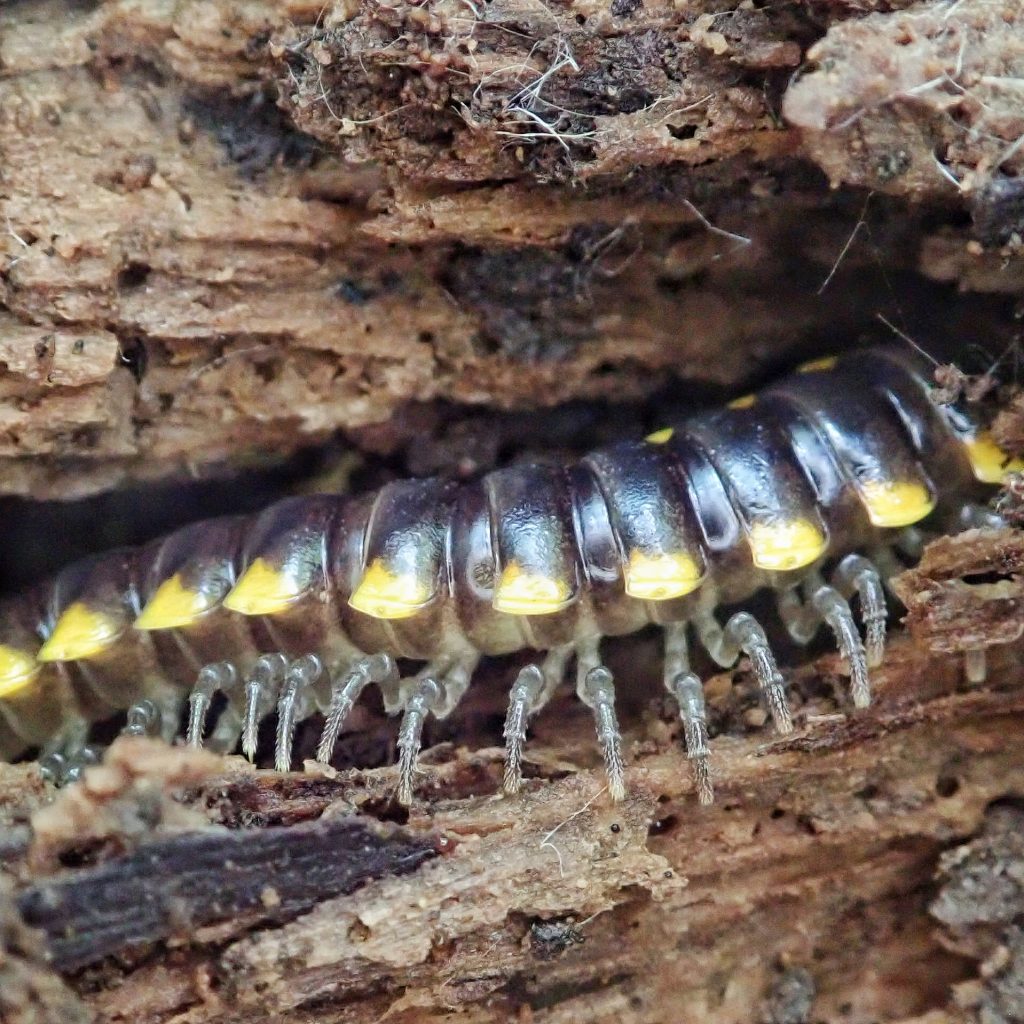
This very common millipede is in the order Polydesmida (flat-backed millipedes) and the family Xystodesmidae. It is sometimes called by the common names yellow-spotted millipede, almond-scented millipede or cyanide millipede, and while these are accurate, they also have been and could be applied to many polydesmidan millipedes, and are therefore not widely used nor accepted. I have also seen it referred to as the clown millipede, and the night train millipede, which is my favorite of the colloquial names. Harpaphe haydeniana is a very common millipede in the forests and woodlands west of the Cascades, and it and Tylobolus uncigerus are probably the most populous species of millipede in that region. Hopefully, after reading about this humble and extremely beneficial creature, the next time you see Harpaphe haydeniana you will feel the respect, and even admiration, for it that I do.
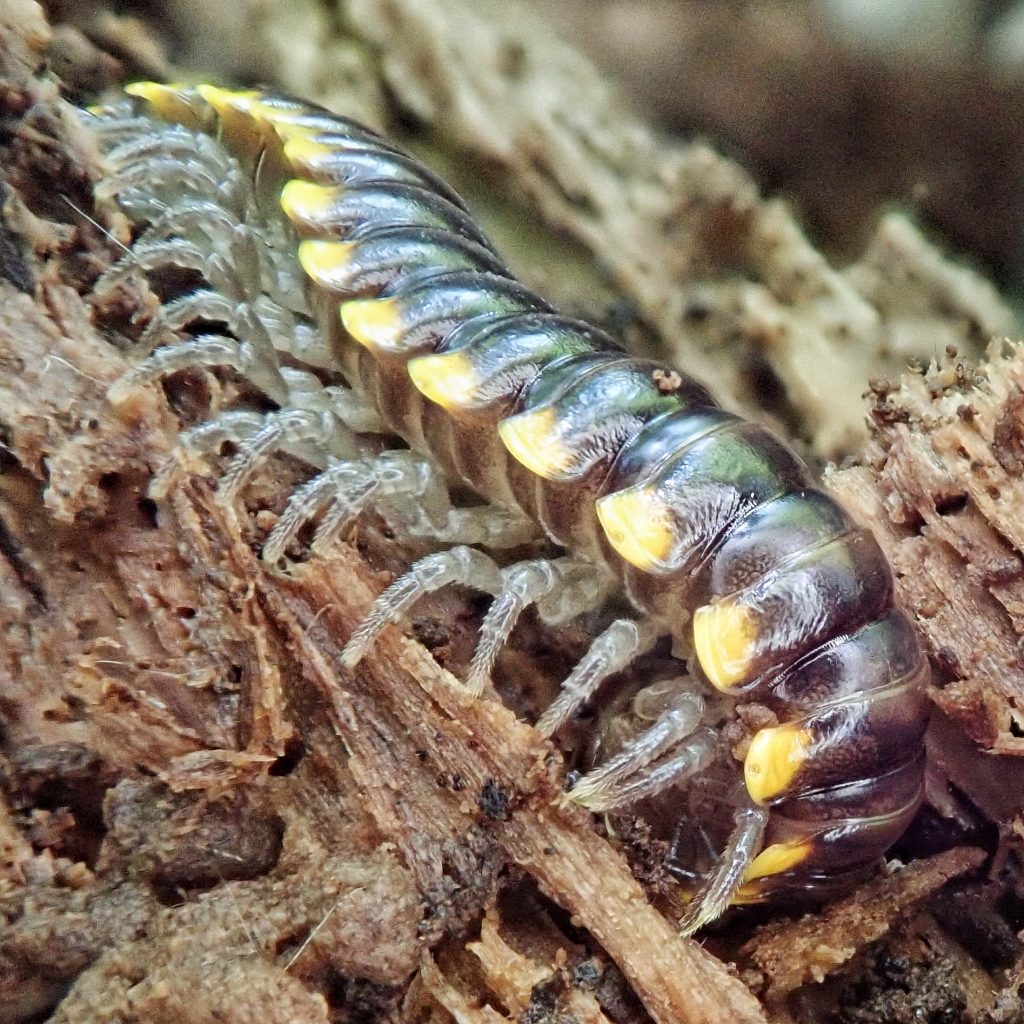
Morphologically, the heavily armored head and many pairs of legs serve a similar purpose, that of facilitating burrowing in bulldozer fashion into leaf litter and other decaying plant matter. Though Harpaphe haydeniana lack eyes, their antenna are very sensitive to chemical signatures, humidity, and vibrations. ETA-Dr. William Shear contacted me to inform me that his long held belief that Polydesmida do not have Tömösváry organs was confirmed in a paper published last year (Moritz/Koch; 2020). And while its function is obscure in other millipedes, the leading hypothesis is that it is sensitive to humidity, and they are pretty sure it is not sensitive to light. I had said they did have such organs and that they were probably light receptors. Thank you Dr. Shear for correcting my misinformation!
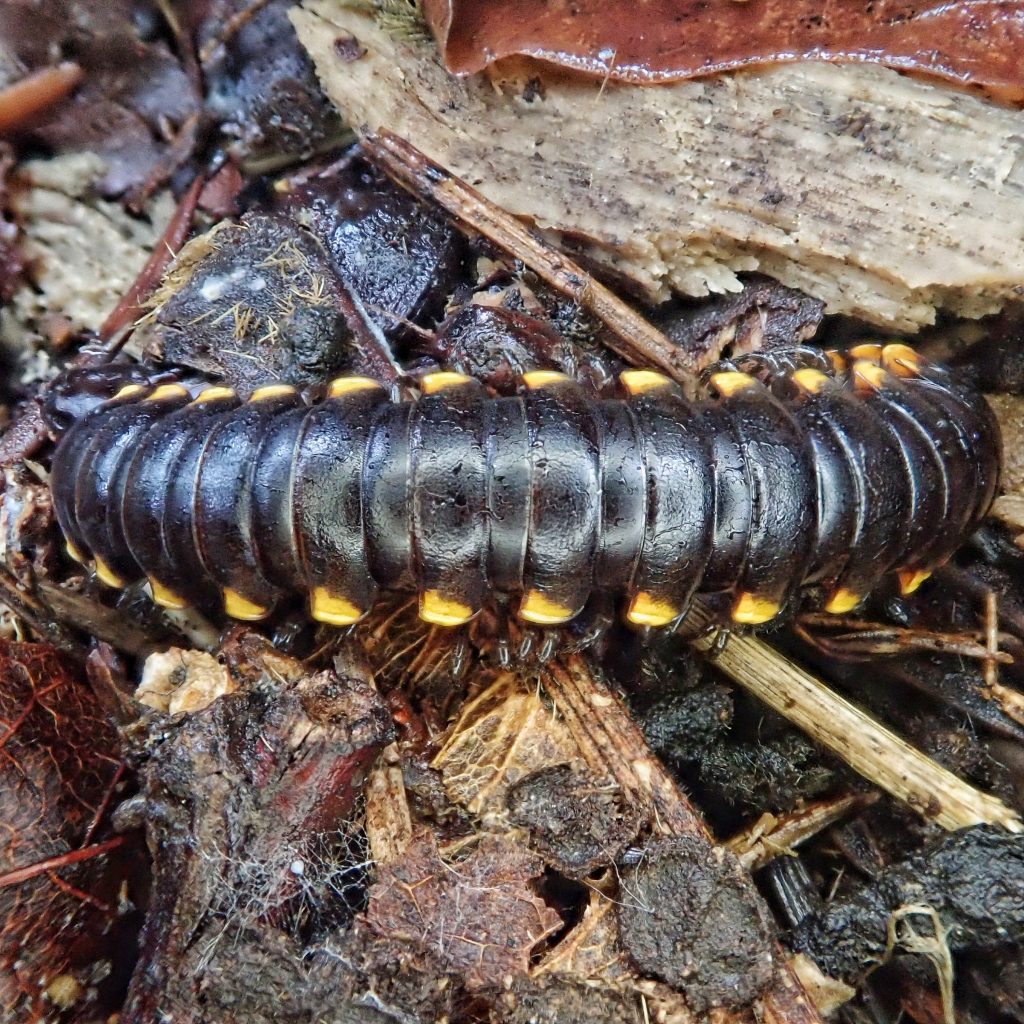
Harpaphe haydeniana is a critical facilitator of the composting of forest floor leaf and needle litter, and it is estimated that they eat 1/3 to 1/2 of the dead leaves and needles in areas they inhabit. Of equal importance to the health of the forest floor are the fecal pellets they excrete, which are an important source of nutrition for other tiny invertebrates and microbes, which help break them down further, releasing the nutrients (especially nitrogen, phosphorus, potassium, calcium, and magnesium) for use by plants and fungi.
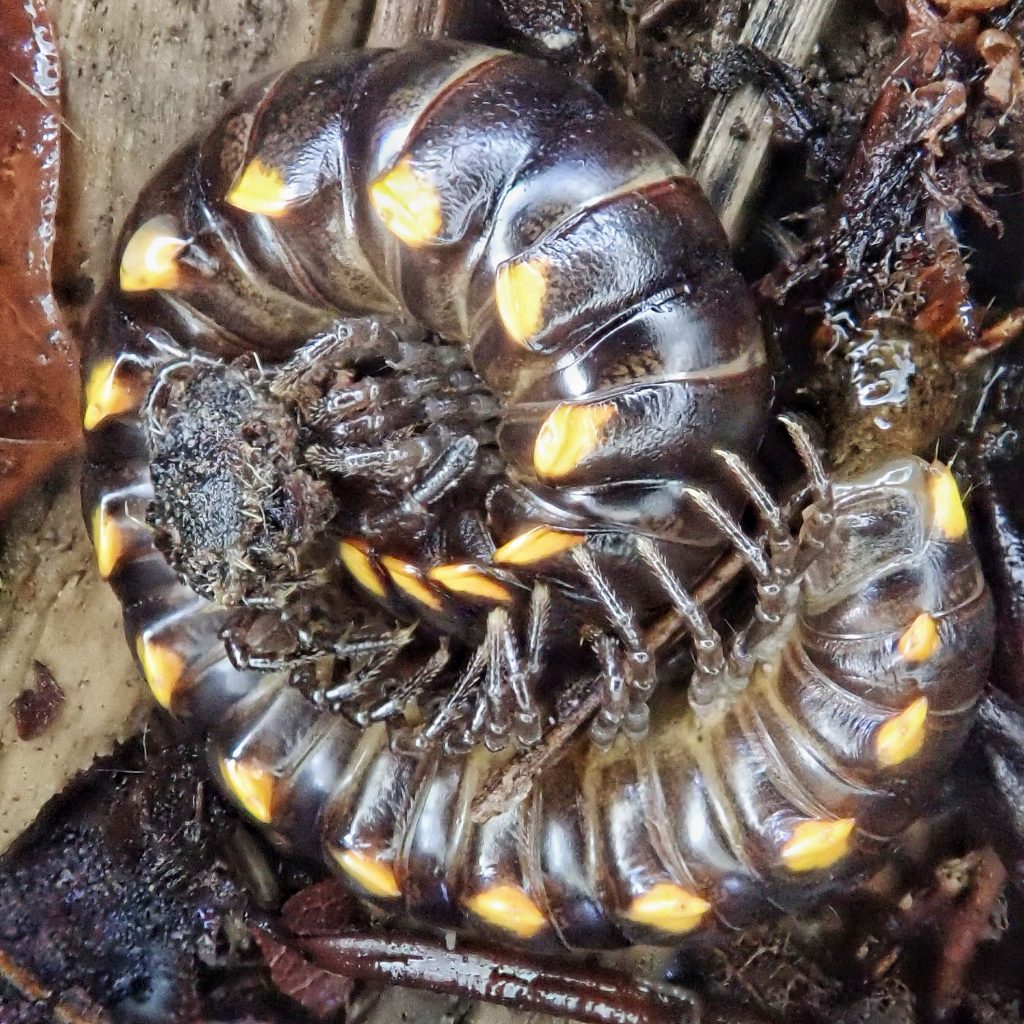
And yes, they do emit cyanide as a defense chemical! They have 2-chambered glands on the side of their body, in one of which they store cyanohydrin. In the other the cyanohydrin is transformed into hydrogen cyanide (HCN), and ejected onto the exoskeleton when they feel threatened (they also usually curl up). They advertise this toxicity with warning (aposematic) coloration, like most arthropods with bold and bright patterns, although some species are just wannabes (Batesian mimicry) who look dangerous or toxic, but can’t actually back it up. Dr Shear pointed out an oversight on my part in not mentioning that the distinctive almond-like odor of these millipedes is due to benzaldehyde, a byproduct of the reaction that turns cyanohydrin into HCN, and that benzaldehyde is an effective deterrent for ants and some other invertebrate predators. Harpaphe haydeniana itself is immune to the poison, and the amount is small enough that it isn’t a concern for humans. I had read that it could cause blistering and skin discoloration, but Dr. Shear has also informed me that this is not so, though millipedes in the order Julida secrete hydroquinones which can cause blistering and discoloration of human skin. HCN can be toxic to small mammals and birds, as well as many arthropods.
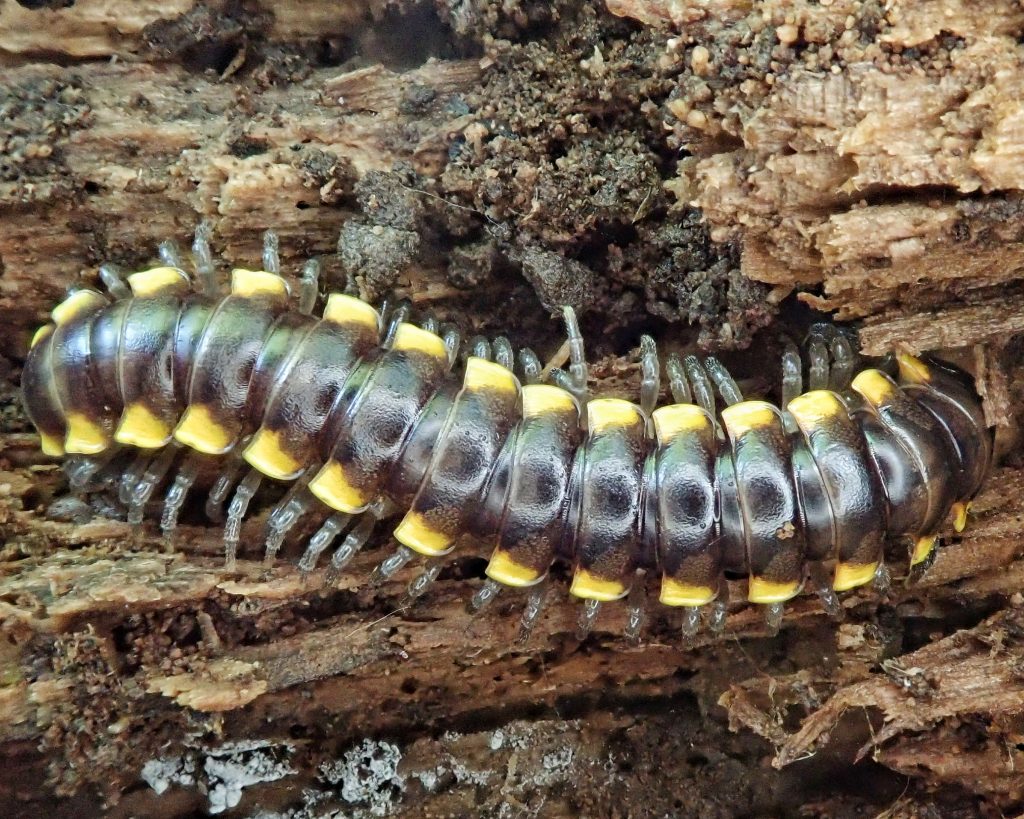
But not to Promecognathus crassus and P. laevissimus, which simply engage the millipede and lop off its head with their formidable mandibles. According to a study (Weary/Will; 2020) it seems that Promecognathus spp. are relatively immune to the cyandide defenses deployed by many members of Polydesmida. It would be interesting to know if their is a sort of arms race going on between the beetles and the millipedes, like the one between Taricha granulosa (Rough-skinned Newts) and their predator Thamnophis sirtalis (Common Garter Snake), wherein the increased tolerance of the snake to the newt’s tetrodotoxin leads to higher concentrations of the toxin upon the newt.
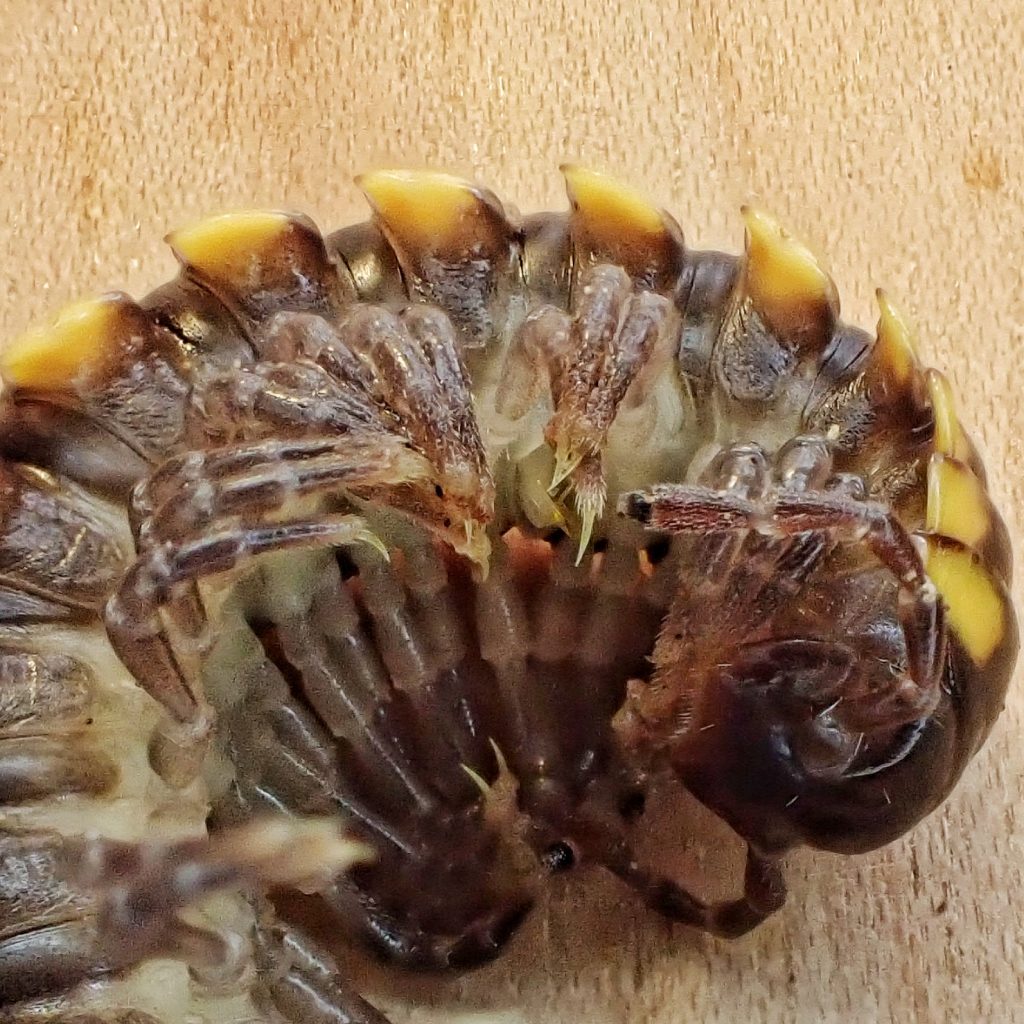
Description-Fairly large (up to 50mm long by 7mm wide) shiny black millipede with yellow spotted paranota (the flaring margin of each segment); paranota are angled to the rear and come to a point on the posterior side; adults have 20 segments and 30 or 31 pairs of legs (on males one pair has developed into gonopods).
Similar species–Chonaphe spp. have blunter posterior corners of their paranota; Tubaphe levii paranota do not project outward from their body; other dark centipedes in its range with yellowish marginal spots are narrower in relation to their length.
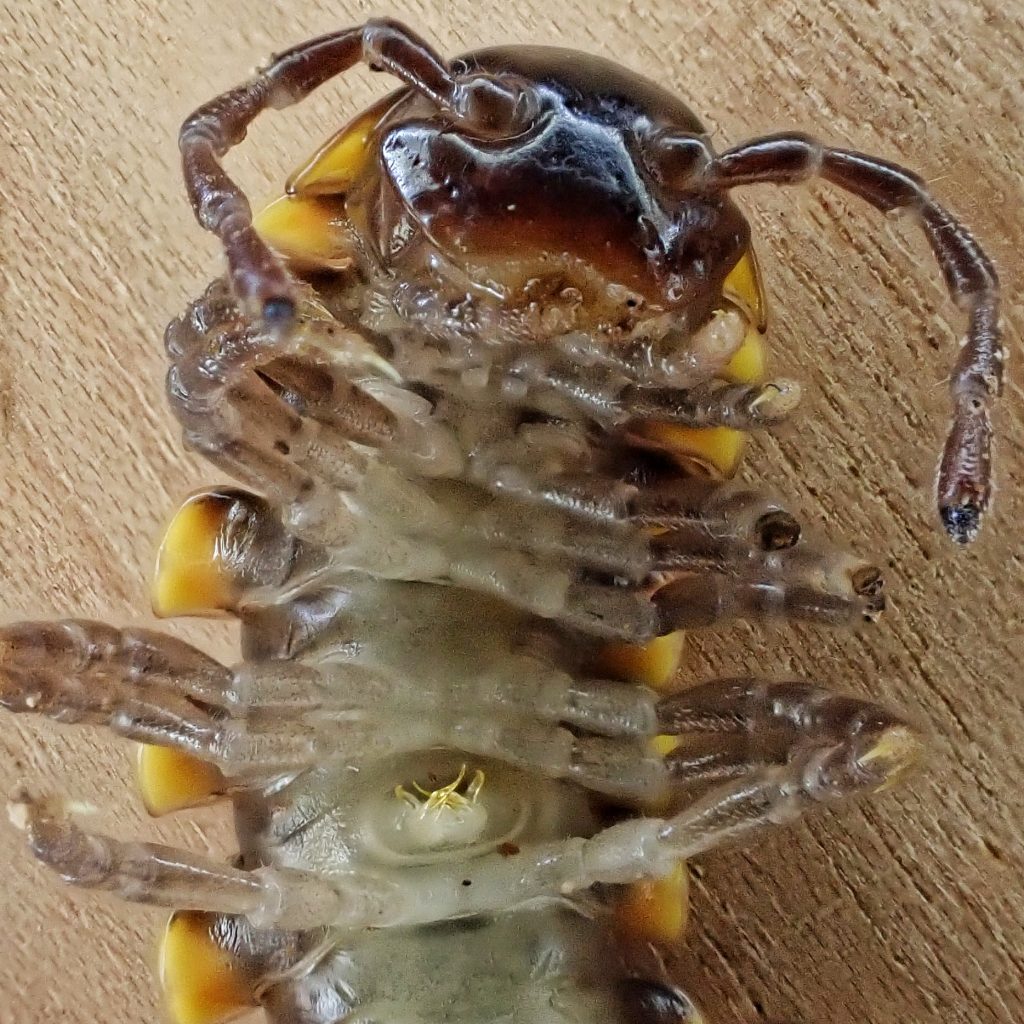
Habitat– In and under decaying logs (and occasionally rocks), and in the leaf litter, of moist to mesic forests and woodlands.
Range-Pacific Coast; in our region it is found west of the Cascades and in sw Oregon and nw California
Eats-Forest floor leaf and needle litter and decayed wood; adults prefer broadleaf litter (primarily alder and maple leaves) to conifer litter, but juveniles feed equally on both; also known to consume its own feces.
Eaten by–Promecognathus crassus and P. laevissimus beetles; eggs, hatchlings, and early instars are preyed upon by insectivores of all classes; various nematodes and marsh flies may parasitize eggs, hatchlings, and early instars.
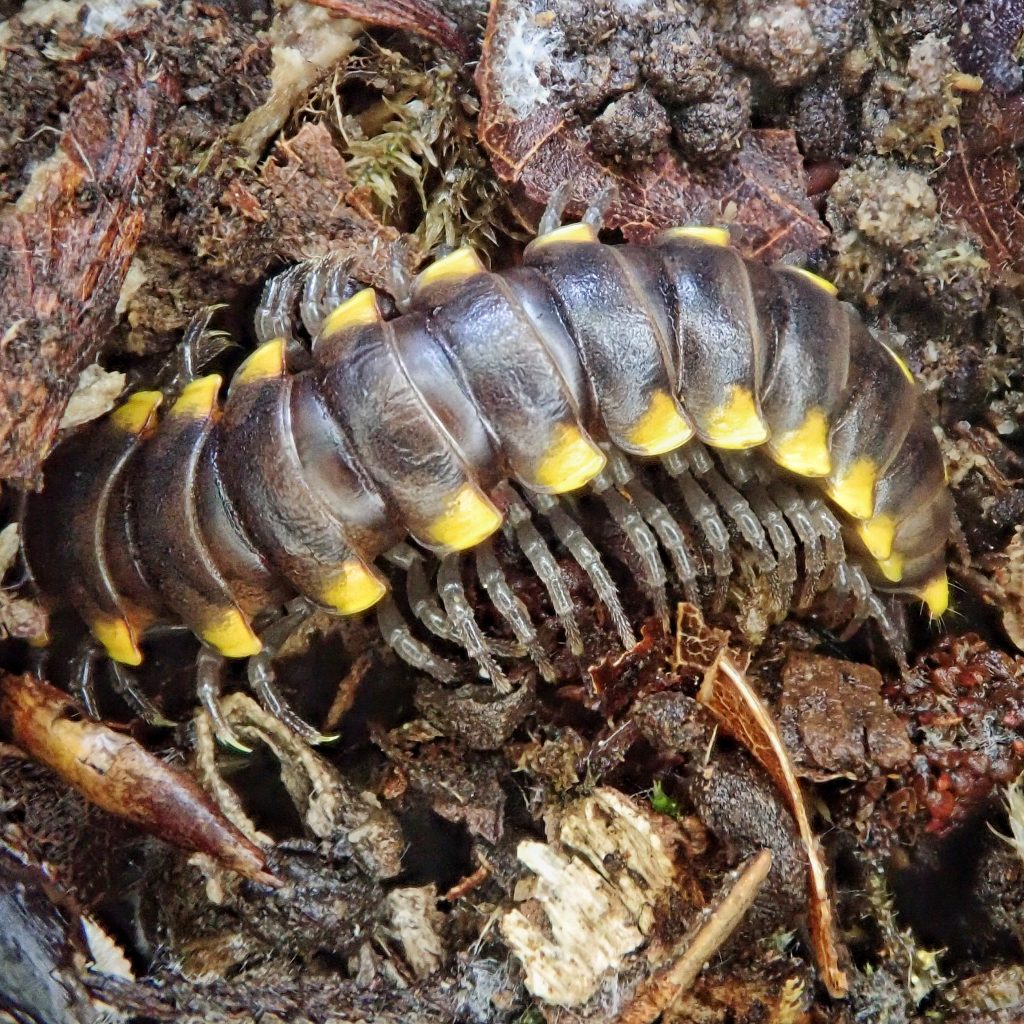
Adults active-Year around, but usually deep under cover during the coldest and driest periods.
Life cycle– Harpaphe haydeniana (as well as a variety of other millipedes) are known to engage in large gatherings for mating purposes. One study (Baumeuster; 2002) found over 2000 of them in a square meter! Up to several hundred eggs are laid in clutches in protected and high humidity locations with abundant food, because the young, which hatch in about three weeks, are immobile until after their first molt; usually produces multiple generations per year; development time to maturity appears to be unknown; lifespan may be up to 3 years.
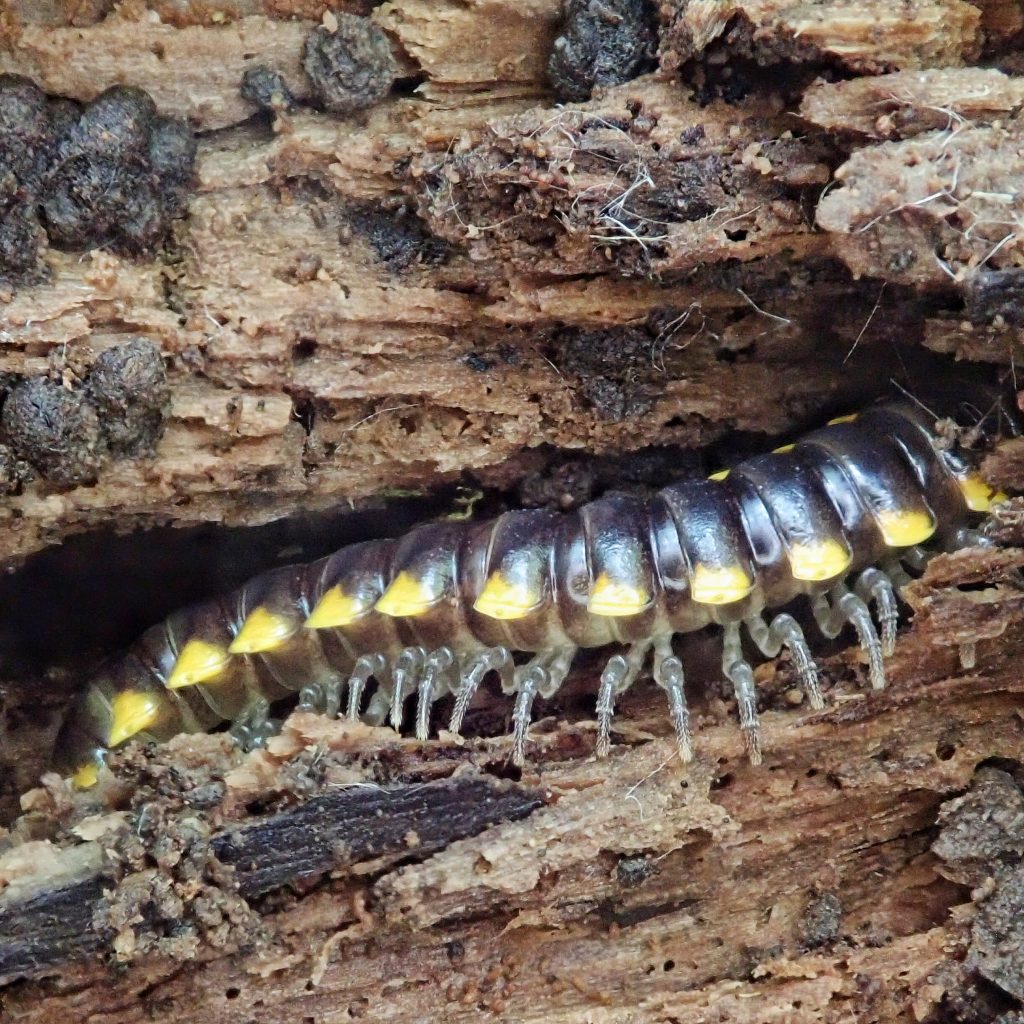
Etymology of names–Harp- is from the Greek word for ‘sickle/scythe’, and refers to the branching of the gonopods as being “a very short, robust, flattened and blade-like armature, to which the generic name alludes.”(Cook;1864). The use of -aphe is more ambiguous, as it is from the Greek for either ‘smooth’ or ‘touch/grip’. I had noticed that -aphe is a common suffix for many polydesmidan genera, and as my friend Sam McNally, who helped me wade through this etymology (although he is in no way responsible for any erroneous conclusions I have reached) pointed out, Aphel- is also used as a prefix for several polydesmidan genera. So it may well be indicating a characteristic of one of the first polydesmids to be described, and has merely been carried along to denote commonality, rather than describing a trait in the group to which it is presently attached. The specific epithet haydeniana refers, according to HC Wood (the original describer of this species) ‘to my friend, Dr. Hayden, whose name is inseparably connected with the natural history of the Far West”. This is probably Ferdinand Vandeveer Hayden, an explorer/ geologist/surgeon.
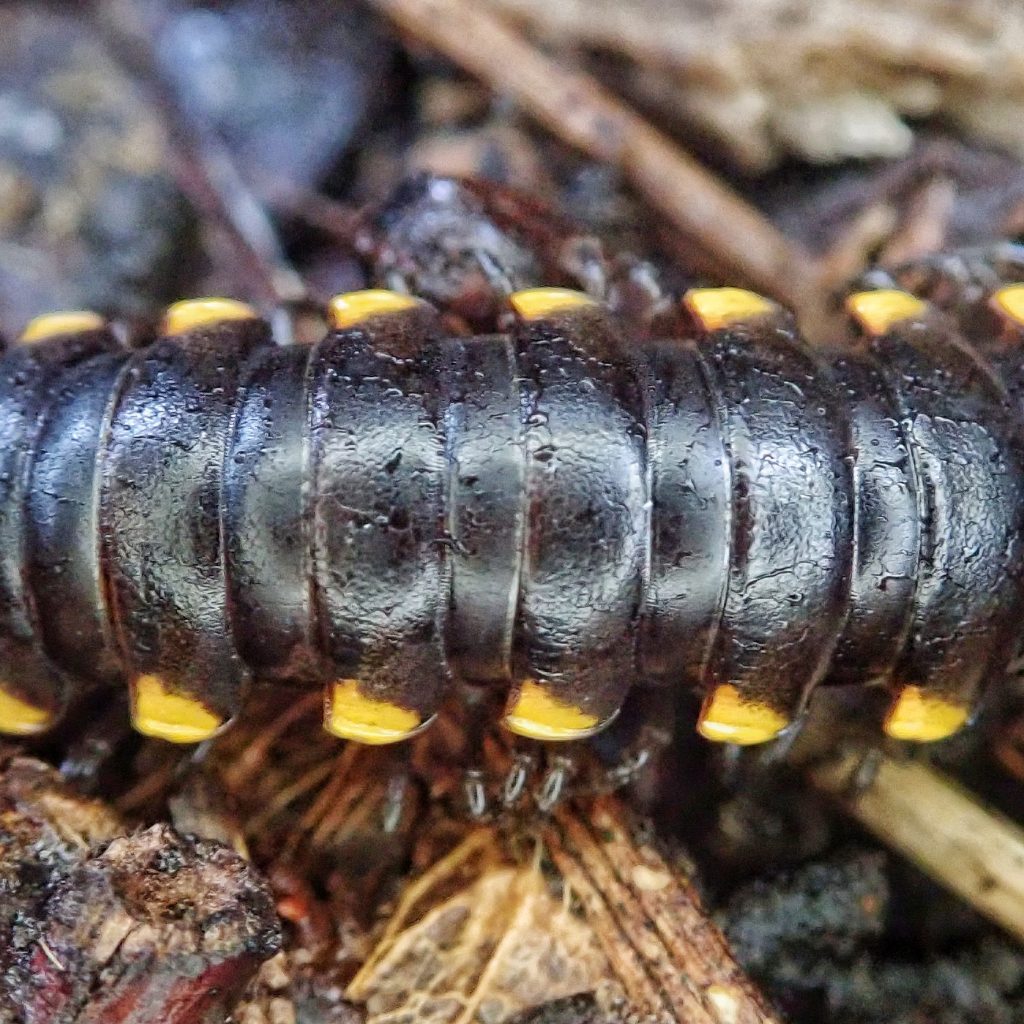
http://bioweb.uwlax.edu/bio203/f2013/crain_alex/index.htm
https://irma.nps.gov/DataStore/DownloadFile/545601
https://bugguide.net/node/view/15008
The Millipede That Protects Itself with Cyanide – Cool Green Science
https://ir.library.oregonstate.edu/downloads/dj52w799w
https://en.m.wikipedia.org/wiki/Harpaphe_haydeniana
https://en.m.wikipedia.org/wiki/Ferdinand_Vandeveer_Hayden
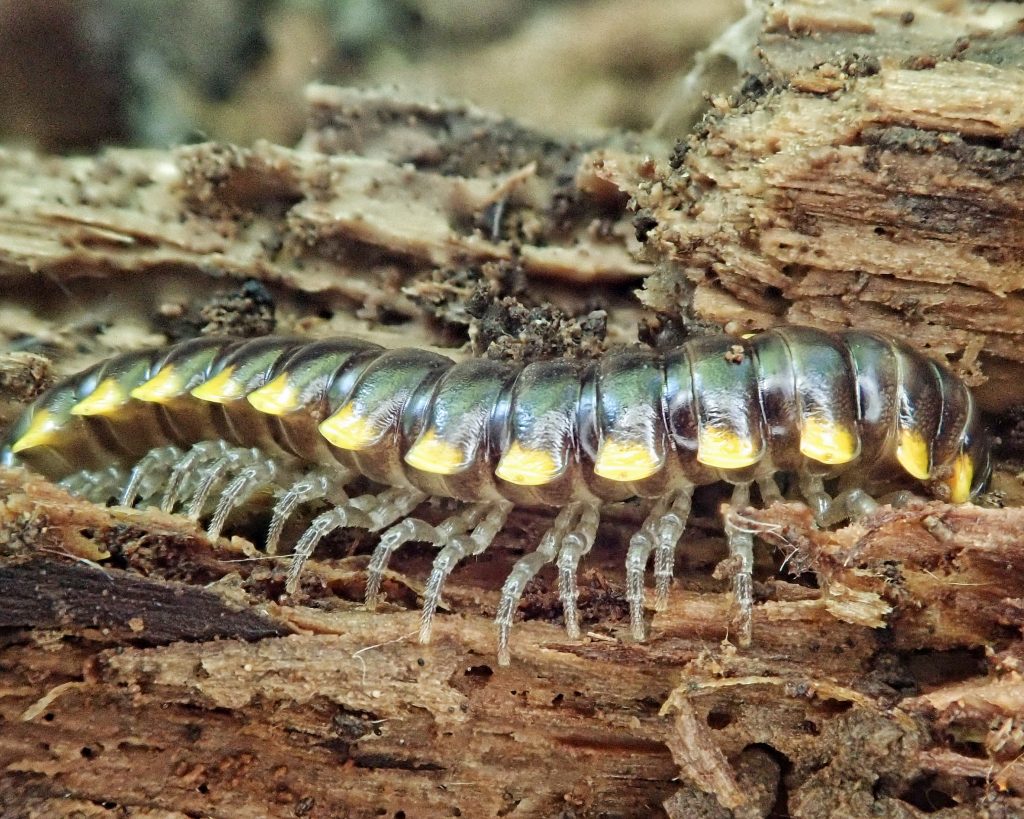
Wow, this is fascinating stuff! Thanks for putting it together
Thanks for the appreciation!
Thanks Dan, I have a new appreciation for these common decomposers, I had no idea of the volume of leaf litter that hey consume. I look forward to your every posting.
Thank you Wilson! I didn’t realize the volume they consume either, and had to read it in several different places before I would believe it.
Well, . . .
I am always enticed, intrigued, inspired by your blogs. So, I love them.
I would appreciate knowing your e-mail address, so that as an oldie I could communicate more directly with you.
I don’t like texting or SMS or other newfangled stuff.
I love the comprehensivenes of your texts and the quality of your photography.
What cameras do you use? Do you use photostacking? (I think you do!)
What else?
Much else! But for now I’ll leave it at that!
Many, many thanks for the quality of your work and all you put into it.
I really love it!
Jochen
Thank you Jochen! My email is recreationalnaturalist@10000thingsofthepnw.con. Feel free to contact me there. For bugs and such I use an Olympus TG5 in the field, and a TG6 at home. Both of them have built in photo stacking. I also have a Sony RX 10 mark iv that I use when photographing from a standing position.
Thanks for your appreciation!